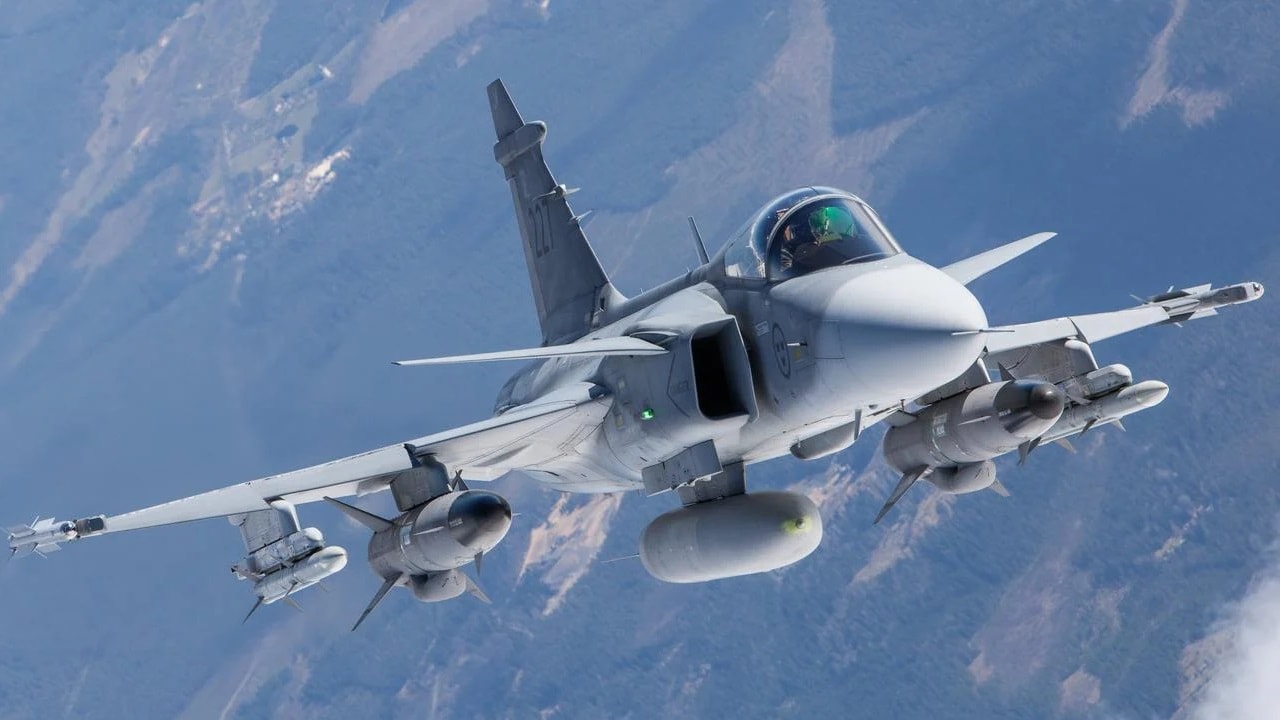The Gripen E isn’t famous like the F-35, F-22 or other U.S.-made stealth planes. However, the Gripen E has all of the features to make it a deadly fighter plane against anything in the sky. Last month, there were likely many smiles at Lockheed Martin as it looks like Canada will adopt the F-35 Lightning II. Prime Minister Justin Trudeau had previously sought to nix any deal, but on Monday, Ottawa announced that the fifth-generation stealth fighter is the best solution for Canada’s needs and to replace the aging CF-18 fleet.
Lockheed Martin’s win – which comes just a week after the United States Department of Defense (DoD) announced that it was scaling back on its F-35 order for the Fiscal Year 2023 (FY23) – is Saab’s loss. The Swedish aerospace giant had touted the Gripen E as a viable and cost-effective aircraft to replace the CF-18. Finland had also announced earlier this year that it was also opting for the F-35 over the Gripen E.
Saab had touted the Gripen E as being best suited for Canada’s climate conditions and strategic requirements, and also noted that it had the longest range and best fuel efficiency of the aircraft being considered by Trudeau’s government.
Development of the Gripen E
Development of the JAS 39 Gripen (Griffin) began in the 1970s when the government in Stockholm began to explore the development of an aircraft that could be capable of fighter, attack and recon missions after evaluating a number of existing foreign aircraft including the American F-16 and F-18 fighters. The Swedish Parliament decided in June 1982 to move forward with the Swedish project, and the JAS 39 Gripen was initially designed to replace the variants of the Saab 35 Viggen and Saab 37 Draken combat aircraft.
Despite the fact that the aircraft was never produced in massive numbers, and Saab only found a few foreign customers – including South Africa, Brazil and the Czech Republic – in 2010, the Swedish defense contractor was awarded a four-year contract to improve the Gripen’s radar and other equipment, integrate new weapons, but also to lower its operating costs.
In June of that year, Saab announced that Stockholm planned to order the Gripen NG, designated JAS 39E/F, which was to enter service in 2017 or earlier dependent on export orders. Assembly began on the first pre-production Gripen E in the summer of 2013, while part of the plan was to convert and retrofit 60 of the JAS 39Cs to the JAS 39E standard by 2023. However, the plan was revised – with newly-guilt airframe for the Gripen E utilizing some reused parts from the JAS 39Cs. The first production Gripen E was rolled out in May 2018.
Extreme Aircraft
Like the Swedish people, the Gripen E can be described as “rugged” and “hearty.” It was developed to be able to operate in extreme climates and from dispersed and unprepared road bases or airstrips. Saab claims that it takes less than 20 minutes with only a limited number of ground crew and equipment to refuel and rearm Gripen for an air-to-air mission, which ensures rapid re-engagement.
Back in the sky, the Gripen E is powered by a GE F414G engine, which provides for a maximum takeoff weight of 16,500 kg, while the aircraft can reach a speed of Mach 2 with supercruise ability, and has a range of 1,500 km. It can carry an impressive payload with its ten hard-points. The aircraft can conduct air-to-air, air-to-surface and reconnaissance missions. Air supremacy is achieved with the carriage of up to seven Meteor Beyond Visual Range Air-to-Air Missiles and two Within Visual Range IRIS-T missiles
The Gripen E is also equipped with AESA-radar, InfraRed Search and Track System (IRST), highly advanced electronic warfare and communication systems. In addition, Saab has incorporated a number of cutting-edge technologies, the latest systems, sensors, weapons and pods to ensure combat advantage, delivering air superiority in highly contested environments. It utilizes a silent networking platform and total sensor fusion across a tactical air unit to blind and confuse the enemy.
According to Saab, this allows one aircraft to go active, while the others go passive. Gripen E’s integrated cutting-edge electronic warfare system combines a variety of offensive and defensive measures to disrupt enemy efforts while protecting itself to ensure high survivability. The fighter can also conduct real-time signal analysis and countermeasures management, as well as extensive electronic intelligence (ELINT) signal collection.
The aircraft further offers an embedded AI capability, while the “future-oriented cockpit design” features a Wide Area Display (WAD) to facilitate the pilot’s decision-making process while providing crucial assistance in the midst of a complex mission. The WAD presents the information in a user-friendly way, which supports a pilot’s ability to select, launch and guide weapons in perfect coordination with other members of a tactical air unit.
The Gripen E may not be a stealth aircraft but could be the most capable fourth-generation fighter in service today.
Now a Senior Editor for 1945, Peter Suciu is a Michigan-based writer who has contributed to more than four dozen magazines, newspapers and websites. He regularly writes about military hardware and is the author of several books on military headgear including A Gallery of Military Headdress, which is available on Amazon.com. Peter is also a Contributing Writer for Forbes.

